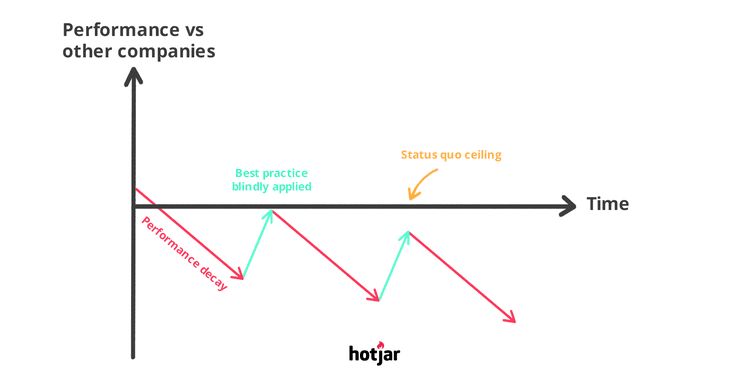
Introduction
In the realm of digital marketing, driving traffic to websites is only the first step towards success. The ultimate goal is to convert that traffic into leads, customers, or subscribers. Conversion Rate Optimization (CRO) strategies play a critical role in maximizing results and unlocking the full potential of digital marketing efforts. For digital marketing agencies, mastering CRO techniques is essential to drive higher conversion rates, increase revenue, and deliver tangible business growth. In this article, we will explore the significance of CRO and how digital marketing agencies can leverage it to optimize websites and unlock their conversion potential.
- Understanding Conversion Rate Optimization (CRO): Conversion Rate Optimization is the process of systematically improving a website’s elements and user experience to increase the percentage of visitors who complete a desired action. By analyzing user behavior, conducting A/B testing, and making data-driven optimizations, CRO aims to enhance website performance, engagement, and ultimately, conversions.
- Analyzing User Behavior and Metrics: Digital marketing agencies should start by analyzing user behavior and key metrics using tools like Google Analytics. By understanding how visitors navigate the website, where they drop off, and what elements they interact with, agencies can identify areas for improvement. Metrics like bounce rate, time on page, and click-through rates provide valuable insights into user engagement and potential conversion barriers.
- Conducting A/B Testing and Experimentation: A/B testing involves comparing two versions of a webpage or element to determine which performs better in terms of conversions. Digital marketing agencies should create variations of landing pages, call-to-action buttons, forms, or other key elements and test them wit威而鋼 h different user segments. A/B testing provides concrete data to inform decisions and guide optimizations for improved conversion rates.
- Optimizing Landing Pages: Landing pages are critical in driving conversions. Digital marketing agencies should focus on optimizing landing pages to align with the user’s intent and enhance the conversion process. Key aspects to consider include clear and persuasive headlines, compelling copy, compelling visuals, strong calls-to-action, intuitive navigation, and trust elements such as testimonials or security seals. Optimizing landing page elements can significantly impact conversion rates.
- Streamlining the Conversion Funnel: Digital marketing agencies should examine the entire conversion funnel and identify potential friction points that hinder conversions. Simplifying the process and reducing friction can have a substantial impact on conversion rates. This includes minimizing form fields, providing guest checkout options, ensuring fast page load times, and optimizing mobile responsiveness. Streamlining the conversion funnel removes barriers and makes it easier for users to convert.
- Personalizing User Experience: Personalization is a powerful CRO strategy. Digital marketing agencies should leverage data and segmentation to personalize the user experience and tailor messaging to different user segments. Personalization can include dynamic content, personalized recommendations, targeted offers, or personalized email marketing campaigns. By delivering relevant and tailored experiences, agencies can significantly enhance conversion rates.
- Continuous Testing, Analysis, and Optimization: CRO is an ongoing process that requires continuous testing, analysis, and optimization. Digital marketing agencies should monitor key metrics, analyze user feedback, and stay up to date with industry best practices. By continuously testing and iterating, agencies can identify opportunities for improvement, uncover emerging trends, and refine their CRO strategies to stay ahead of the competition.

Conversion Rate Optimization (CRO):
Putting Users First Instead of relying on generic best practices and fast fixes, the most effective approach to enhance your website’s conversion rate involves gaining a deep understanding of your visitors, users, and customers and catering to their specific needs.
Within this comprehensive guide, we debunk several misconceptions surrounding conversion optimization. We also engage in conversations with over 20 conversion experts and provide you with a complimentary, downloadable three-step CRO plan. This plan equips you with the tools necessary to gather essential data, enabling you to consistently enhance your conversion rates.
Conversion Rate Optimization (CRO) involves the practice of enhancing the percentage of users who engage in a desired action on a website. These desired actions encompass activities such as making a purchase, clicking ‘add to cart,’ subscribing to a service, completing a form, or clicking on a link.
A User-Centric Perspective on CRO Conventional CRO definitions, like the one provided above, often emphasize conversion metrics, averages, and benchmarks. While these numerical aspects are undoubtedly valuable, they can sometimes overshadow the individuals behind the data points.
Here, we present an alternative, more comprehensive, and user-centric approach to defining CRO: consider it as a process that revolves around comprehending the factors that drive, deter, and persuade your users. By doing so, you can deliver an exceptional user experience, which, in turn, leads to conversions and ultimately improves your website’s conversion rate.
Why do we favor this alternative definition? Because while the focus on the end result—conversion—is undeniably crucial, the journey leading up to that point encompasses numerous pivotal stages:
- Specific DRIVERS bring visitors to your website.
- Specific BARRIERS may prompt them to depart.
- Specific HOOKS are what convince them to convert.

When you’re striving to enhance conversions, not every issue can be quantified, substantiated by concrete figures, or resolved with a straightforward solution. Certainly, there are instances where a glaring bug obstructs 80% of your users from completing a task, and rectifying that single issue can rescue your entire business. However, there are also situations where your website functions flawlessly, yet conversions remain elusive. In such cases, delving deeper into the ‘why’ beyond the data at hand becomes imperative—your primary focus should shift to your users. This is precisely what we, at Hotjar, believe Conversion Rate Optimization (CRO) truly entails.
Whether you are the proprietor of an e-commerce platform or responsible for online marketing or SEO (search engine optimization), CRO consistently remains a paramount concern for fostering your organization’s growth.
How to Compute Conversion Rate The conversion rate is determined by dividing the number of conversions (desired actions accomplished) by the total count of visitors and then multiplying the outcome by 100 to express it as a percentage.

As an illustration, if your webpage recorded 18 sales from 450 visitors last month, your conversion rate would be calculated as follows: 18 divided by 450 (0.04), then multiplied by 100, resulting in a 4% conversion rate.
When it comes to the average conversion rate, it’s worth noting that figures vary widely, ranging from 1% to 4%, depending on the source. However, we must emphasize that this statistic is somewhat arbitrary for several reasons:
- Conversion rates greatly vary based on the specific conversion goal (e.g., ad clicks, completed checkouts, newsletter signups, etc.).
- Each website, page, and audience exhibits unique characteristics and behaviors.
- Most individuals do not publicly disclose their conversion data.
Averages may serve as initial reference points for benchmarking, but their relevance to YOUR website is limited. Fixating on an average percentage and attempting to maximize conversions solely to align with it isn’t the most effective approach to conversion rate optimization. Instead, focusing on gaining a profound understanding of your users’ actual needs is the key. By addressing those needs, conversions will naturally follow.
Adopting established best practices without considering innovation can leave companies constantly trying to catch up. In the meantime, forward-thinking and experimental businesses are actively enhancing their strategies, setting the stage for these improvements to become recognized as the new ‘best practices’ in the future.

All other conventional optimization tools serve as the means to facilitate these actions, and they contribute in three key ways:
- Quantitative tools for uncovering the ‘what’ Quantitative tools are designed to gather numerical data that reveals what is occurring on your website. These tools encompass:
-
- General analytics tools, such as Google Analytics, that track website traffic.
- Website heat map tools, which compile data on clicks, scrolls, and movement on a page.
- Funnel tools, used to measure when visitors drop off from a sales funnel.
- Form analysis tools, which track form submissions.
- Customer Satisfaction (CSAT) tools, gauging customer satisfaction on a scale from 1 to 10.
- Tools employing the Net Promoter System to assess the likelihood of users recommending your website or product on a scale from 0 to 10.
- Qualitative tools for uncovering the ‘why’ Qualitative tools are employed to collect non-numerical data that elucidates why your website visitors exhibit particular behaviors. These tools encompass:
- Website feedback tools, including on-page and external link surveys, where visitors answer questions about their experience.
- Tools for testing changes and measuring improvements Once you’ve gathered quantitative and qualitative feedback and gained a clear understanding of your website’s dynamics, testing tools empower you to implement changes and assess their impact. These tools encompass:
- A/B testing tools, facilitating the testing of different variations of a page to identify the top performer (recommended for high-traffic sites to ensure statistically valid results).
- Website session recording/replay tools, showcasing how individual users navigate through your website.
- Usability testing tools, where a panel of potential or current customers express their thoughts and opinions about your website.
- Online reviews, providing insight into people’s experiences with your brand and product.
- Website heat map and session recording tools, permitting comparisons between various page variations and their corresponding user behavior.
- Conversion-tracking analytics tools, monitoring and tracking conversions.
- Website feedback tools (such as visual feedback widgets or NPS dashboards) aiding in the collection of qualitative feedback, quantification of feedback, and comparison of responses before and after implementing changes.
Conclusion
Conversion Rate Optimization is a crucial aspect of digital marketing strategies, enabling agencies to maximize results and unlock the conversion potential of websites. By analyzing user behavior, conducting A/B testing, optimizing landing pages, streamlining the conversion funnel, personalizing the user experience, and continuously testing and optimizing, agencies can drive higher conversion rates and deliver tangible business growth for their clients. CRO is a powerful tool in the arsenal of digital marketing agencies, allowing them to enhance website performance, engage users effectively, and ultimately achieve remarkable success in the ever-evolving digital landscape.
If you are looking one click here, contact us here
Follow us on Instagram
